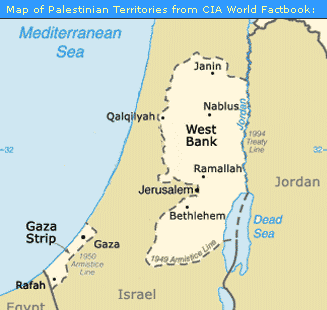In recent decades, few lands have been as fractious as the West Bank and Gaza Strip. From 1948 until 1967, Jordan controlled the West Bank, and the Gaza Strip was under Egyptian rule. Following a 1967 war, Israel occupied the West Bank and Gaza Strip. In recent years, Jordan and Egypt have retracted their claims on the West Bank and Gaza Strip, respectively, in agreements with Israel and Palestinian leaders. In 1993, Yasser Arafat, leader of the Palestine Liberation Organization (P.L.O.), and Israeli Prime Minister Yitzhak Rabin signed the Israel-PLO Declaration of Principles on Interim Self-Government Arrangements regarding the West Bank and Gaza Strip. Arafat served as president of the Palestinian Authority from 1996 until his death in 2004; while highly effective as the longstanding symbol of Palestinian independence, he was less successful as a ruler. Under his leadership, Arafat’s Fatah party was widely considered ineffectual — rife with corruption and also hamstrung by security and other limitations imposed by Israel. The past decade has seen the rapid rise in popularity and power of Islamic fundamentalist groups, particularly Hamas. Firmly opposed to peace with Israel, Hamas has earned an international reputation as a result of its suicide attacks that have killed hundreds of Israelis. But among Palestinians, Hamas is also known for its schools, clinics, and welfare programs — and incorruptible officials. In 2005, Hamas candidates dominated local elections in Gaza and fared very well in the West Bank. Prime Minister Mahmoud Abbas (also known as Abu Mazen), unlike Arafat, has earned the trust of American leaders, who seek to play an active role in the “roadmap” to peace. Abbas may be buoyed by Israel’s withdrawal from Gaza, scheduled for August 2005. Yet Abbas faces many internal and external challenges in achieving his goal: the independent state of Palestine.
July 19th, 2005
Future for Lebanon
Map: Middle East Governments: Palestinian Territory
- Introduction
- Afghanistan
- Bahrain
- Egypt
- Iran
- Iraq
- Israel
- Jordan
- Kuwait
- Lebanon
- Oman
- Pakistan
- Palestinian Territory
- Qatar
- Saudi Arabia
- Syria
- Turkey
- United Arab Emirates
- Yemen


